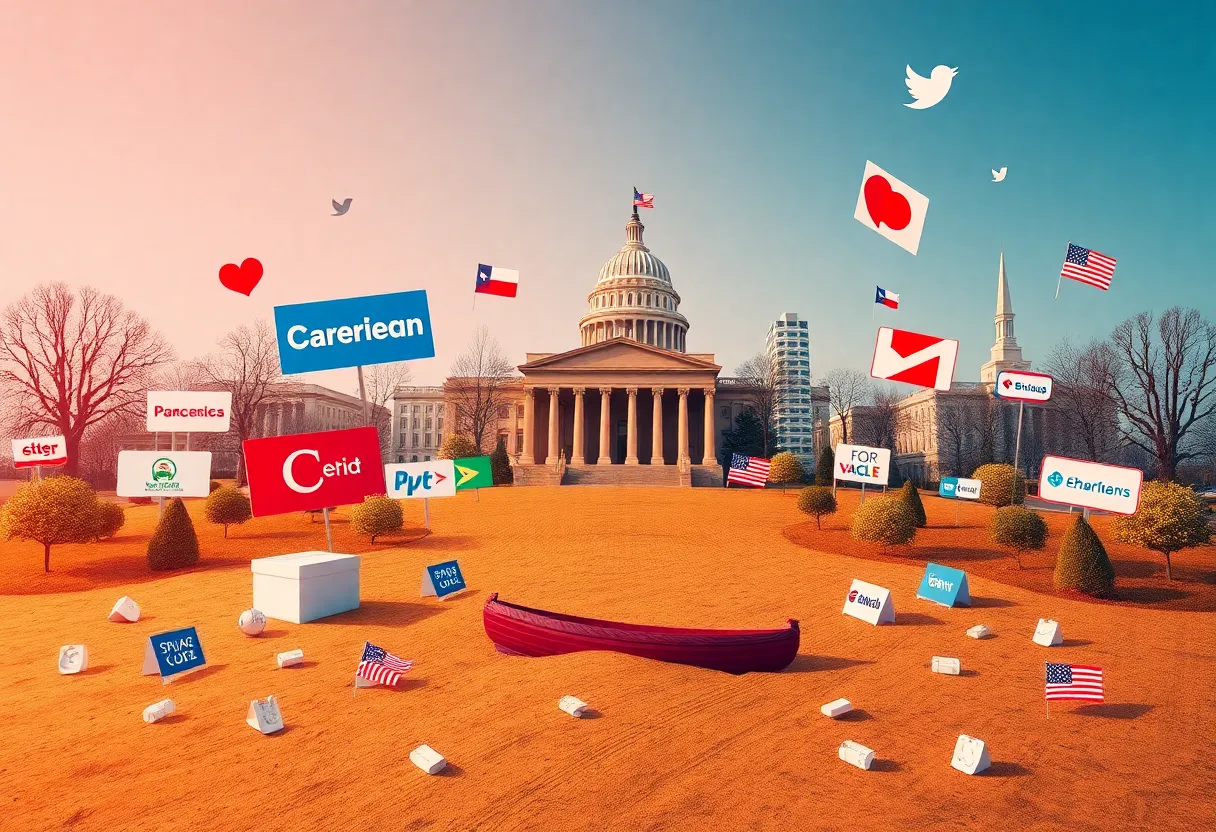Brands Tread Lightly on the Political Precipice Ahead of Election Day
As excitement (and anxiety) builds in America with the presidential election just around the corner, brands find themselves in a uniquely challenging position. With consumers on edge, these businesses are trying to navigate the stormy waters of political discourse while keeping their footing and staying connected to their audiences.
A Balancing Act for Brands
According to recent findings from GWI, a surprising 22% of U.S. consumers have stopped using a product because of a brand’s political stance in just the last few months. The frustration doesn’t end there; nearly 18% unfollowed brands on social media due to political content. Talk about a tightrope walk! It’s no wonder that a whopping 82% of marketers express concern over how to promote their brands during such a politically charged climate. With consumers pulling away from brands they perceive to be politically charged, it becomes even more crucial for marketers to tread lightly.
Stonyfield’s Unique Approach
One brand that’s attempting to stay above the fray is organic yogurt maker Stonyfield. They’ve launched the “Toxic Free Election Challenge,” encouraging followers to unplug from social media until Election Day. The goal? To encourage emotional wellness by steering clear of the “digital toxicity” stemming from political discussions. So far, it’s working like a charm. In just two weeks, 2.1 million people have committed to log off social media for the month leading up to the election. Stonyfield is demonstrating that even in a political maelstrom, there’s room for a positive, health-centric message.
Americans Shift Towards Social Media Quiet
The current election cycle has led to significant shifts in online behavior. Research highlights that one-third of Americans actively avoid political content for various reasons, with 35% feeling overwhelmed and 30% mentioning negative impacts on their emotional well-being. Not to mention, about 49% of users have reduced social media usage recently, all in search of a more peaceful existence.
With these sentiments circulating, one must wonder how brands are supposed to communicate effectively while navigating an increasingly complex landscape. For instance, many major brands, like Bud Light and Target, have faced backlash over intended cultural alignments. The delicate task of advertising during an election year means more uncertainties for marketers who aim to resonate positively with their audiences.
Innovative Campaigns from Various Brands
Not all brands are withdrawing from the political conversation. For example, Red Lobster has cleverly embraced the light-hearted spirit of camaraderie with its “Cheddar Bay 2024” campaign. This initiative emphasizes coming together over a delicious meal, all while poking fun at traditional political ads. They’re even advertising the chance to win free meals for four years—who wouldn’t want that?
Meanwhile, the hotel chain Aloft is turning to our furry friends for a calming influence. They’ve created a YouTube meditation video starring adorable pups and are organizing “Not Watch Pawties” on election day. The idea? To offer a space where individuals can enjoy the company of shelter dogs while temporarily escaping the relentless political chatter.
Understanding Your Audience Matters
While brands may be torn about how to act politically, there’s compelling data on audience preferences. Young adults—especially millennials and Gen Z—show support for brands that share their values, more so than older generations. This divergence highlights the importance of understanding target demographics before making any political statements. In fact, 55% of Republicans say they’d rather brands steer clear of politics, while only 26% of Democrats feel the same. Such contrasting perspectives demonstrate just how delicate a situation can be.
Risk Management in a Volatile Climate
As if the stakes weren’t high enough, the landscape is made even more complex with the rise of artificial intelligence and its potential for misuse. With brand safety at risk, many experts urge companies to rethink their advertising strategies in this era of intense political polarization. Brands need to stay vigilant—there’s a lot at stake this election season.
As the days count down to November 5, brands are feeling the heat. How they navigate these turbulent waters could change the fortunes of a brand, transforming potential crises into opportunities for meaningful connections. The upcoming election season offers a strong lesson in being aware of the emotional pulse of consumers. After all, success hinges on how brands respond to today’s unpredictable environment.








